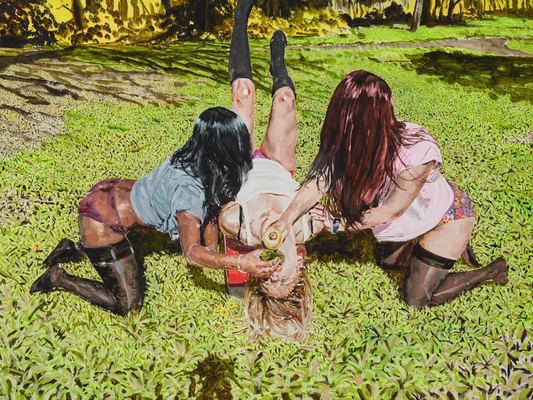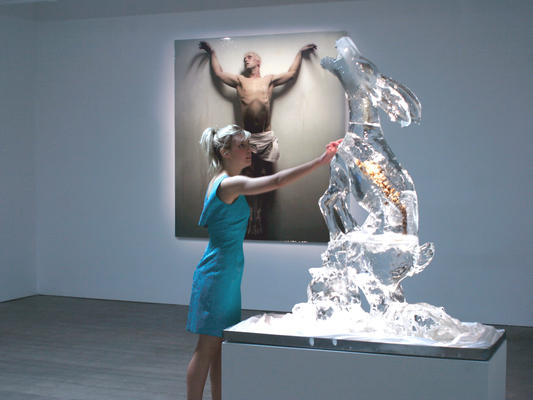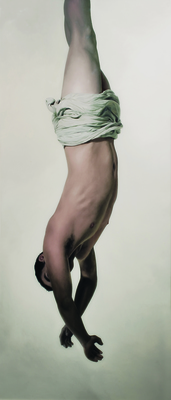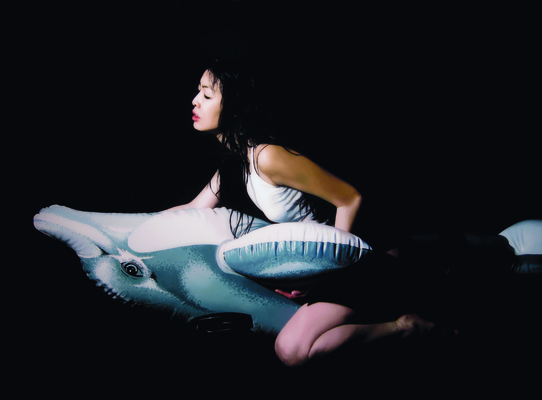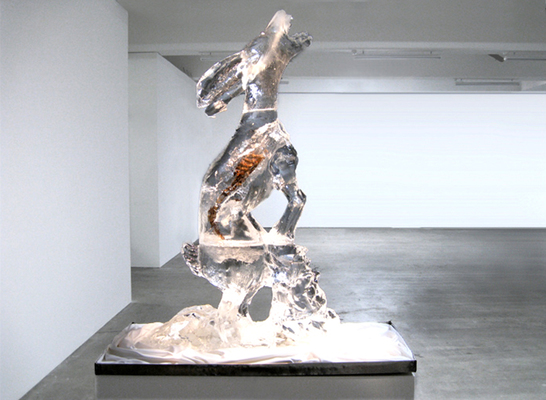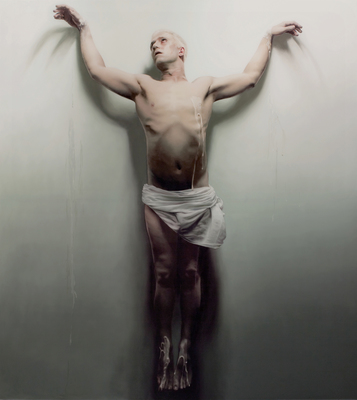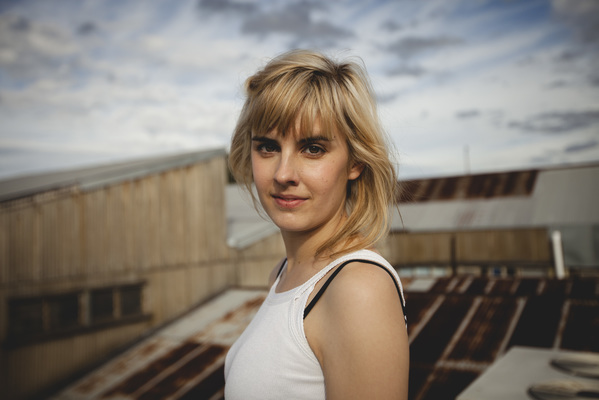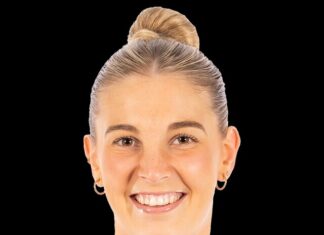Geelong artist Sophia Hewson has been shortlisted for this year’s Archibald prize. It’s her second tip at the prestigious Aussie art gong but it’s hardly the first time she’s caught the art world’s eye. She’s been one of the most collectible artists in the country for some time now. NOEL MURPHYY spoke with her last year when she outlined a deeply intellectual approach to art ….
KANGAROO spines in ice sculptures, albino Christs, orgasmic nuns in the sweet pain of religious ecstasy and bloody, dead animal carcasses and fetishism… if you thought contemporary art was dodging controversy, think again.
Sophia Hewson’s art is right at the cutting edge of it, with a kind of honeyed brutalism that challenges us on numerous fronts to think and rethink.
It’s among the most collectable in the country, a solid investment if you like, and it’s propelling the 28-year-old Geelong artist to the forefront of Australia’s art world with its shock value, intellectual rigour and focus on the human condition.
At first blush, Hewson’s art can be perplexing, bewildering. But its mix of painting, sculpture and photography _ with oils, resins, ice, animal organs, even hundreds and thousands _ can be riveting.
Add death, nudes, sex and religious themes, and you have all the ingredients for an orgiastic artistic experience that’s complex, confronting, even fun, all at once.
Hewson’s images can be a little mind-boggling, there’s no two ways about it. But, hey, that’s art.
Take the woman riding an inflatable dolphin in an overtly erotic pose. Critics have plumbed it for all its worth with Caravaggio, sex show fetish, mythological and nymph references.
And the man in white loincloth in a crucifixion pose with white fluid seeping from Christ-like stigmata, from her stunning Dy Dykrenore exhibition of 2010. That’s been read by critics for sperm and punishment for hedonism, and invites all manner of other interpretation too.
Take the other man in a loincloth, dangling upside down, in the same exhibition. Or the staggering ice sculpture embedded with a kangaroo spine Hewson’s unearthed on her parents farm at Lorne. Its visual presence alone is a feast but its meaning, again, mysterious and wide open to interpretation.
In fact, they’re all powerful, evocative, thought-provoking, metaphorical, but Hewson rarely offers clues to their significance – to the frustrated imaginings of critics forced to liken her taciturn nature to the mute brilliance of her images.
Hewson is more forthcoming with GC, however, explaining the four-square-metre painting of Christ as an albino, and related images in Dy Dykrenore, as a “contemporary re-creation of Jesus’ crucifixion, with the characters and the narrative manipulated and metamorphosed’’.
“Each artwork in the show played the role of a particular character from the biblical narrative; there was Jesus, God and a rising saint,’’ she says.
“Jesus is painted as an albino. Covered in an ambiguous white slime, he becomes a kind of eccentric psychotic vision.
“The ice sculpture … is a representation of God. Spotlit to shimmer, slippery and cold to touch, its monster-like form seems unearthly. Embedded with a semi-decayed kangaroo spine, and melting, it becomes an ominous representation of a God literally disappearing.’’
The upside-down man references the New Testament’s Matthew 27:52-53 – which states that when Christ died “graves were opened; and many bodies of the saints which slept arose’’ – but Hewson has her reversed and disoriented, falling from the sky.
It’s part of thematic approach to faith and the human condition’s difficulty synthesising its inherent lack of verification. As she says, “a metaphor, not for loss of faith, but for the pursuit of faith’’. That and the disorienting sensations arising from that pursuit.
“Religious icons traditionally used to articulate spiritual revelation are … through their mutations, employed to convey the sensation of faith not found,’’ she says.
And all of a sudden, her medium starts to become not just clear but also a deep, timeless statement on the human condition.
Visualising the world and its manifold conundrums and expressing them through art is not everyone’s ready skill-set. Hewson is different.
“I think I began from quite a young age with a heightened awareness of the visual world,’’ she says.
“I understood visual language more naturally than our auditory one. And art is a job that such close proximity to death, faith, love, sex. Art grapples with the core of things.’’
Hewson, who now lives in Melbourne and works from Richmond studio, has run up an impressive catalogue of exhibitions in recent years, at venues including Melbourne’s Lindberg and West Space galleries, Gippsland Regional Gallery, Mornington Peninsula Regional Gallery and Sydney’s Chalkhorse Gallery.
She’s also been shortlisted for the Doug Moran Portrait prize and twice for the Metro Gallery Art award, snaffling runner-up in 2010. But observers say she’s just hitting her straps.
Sophia Hewson grew up in Geelong, studied art at Geelong Fine Art School and graduated from the Victorian College of the Arts with first-class honours.
“I like painting with oil paints. I used to end up covered in oil from head to toe when I was nine and went to Robert Drummond’s classes,’’ she recalls.
“When my Mum would pick me up after class she would have to lay out a plastic sheet over the car seat.’’
For all you might plumb from a Hewson work there‘s yet another aspect – a signature aspect – that sets her artistry apart from the rest. Resin – and lashings of the stuff, smothered across her work.
“The reflection makes the work more complicated and gives it that embedded quality,’’ she says.
“But for me also, I think it makes the work look edible. It’s like dipping a painting in thick, clear honey, and it enhances the qualities that already exist in oil paint.’’



